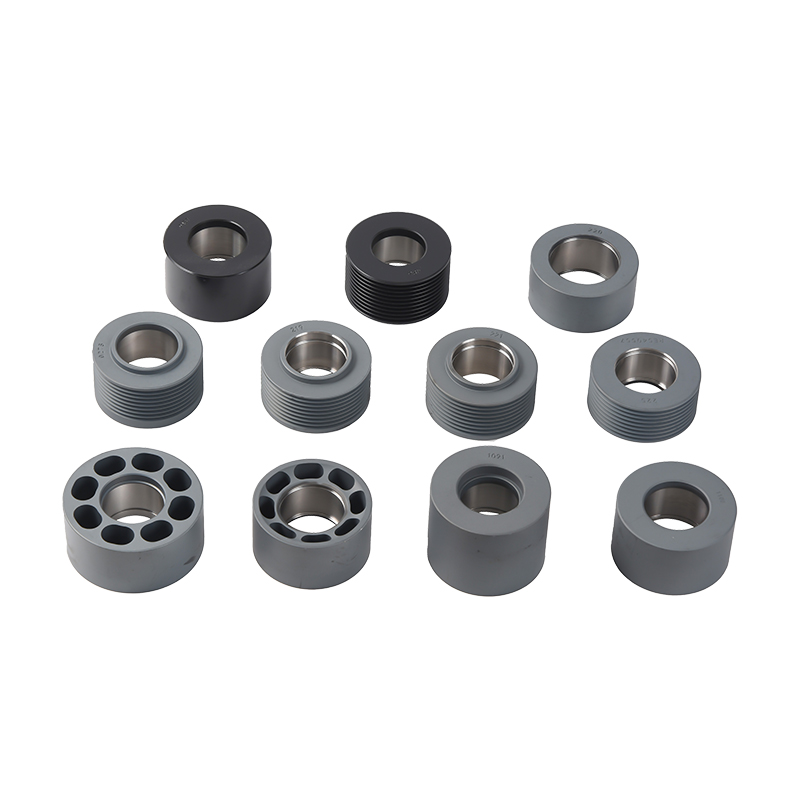Auto parts pulleys serve several critical functions in a vehicle, contributing to the proper operation of various engine components. The primary functions of an auto parts pulley include:
Power Transmission: Auto parts pulleys are critical components in the accessory drive system, facilitating the transmission of power from the engine to various ancillary components. The crankshaft pulley, often connected to the harmonic balancer, serves as the initial point of power transfer. This rotational energy is then transferred through the drive belt or chain to power secondary pulleys associated with components like the alternator, power steering pump, air conditioning compressor, and water pump. The precision and reliability of this power transmission are essential for the proper functioning of these crucial vehicle systems.
Belt Tensioning: Tensioner pulleys play a pivotal role in maintaining optimal tension in the drive belt. Utilizing spring-loaded mechanisms, they automatically adjust tension to compensate for belt wear and environmental conditions. Proper tension ensures efficient power transfer and minimizes the risk of slippage. This function is crucial in preventing premature wear of the belt and associated components, contributing to the overall longevity of the engine's accessory drive system.
Accessory Operation: The operation of essential vehicle accessories is contingent upon the effective functioning of auto parts pulleys. The serpentine or V-belt, driven by the crankshaft pulley, powers components like the water pump. The water pump, in turn, ensures the regulation of engine temperature by circulating coolant. The reliability of these pulleys directly impacts the performance and longevity of vital accessories, contributing to the overall functionality of the vehicle.
Engine Timing: In engines with timing belts or chains, timing pulleys synchronize the movement of the crankshaft and camshaft. This coordination is crucial for precise valve timing, ensuring optimal combustion and engine efficiency. Timing pulleys are engineered to maintain precise alignment, and any deviation can result in engine misfires, reduced performance, or even catastrophic engine failure. The accuracy of timing pulleys is, therefore, paramount for the proper functioning of the engine's internal components.
Reduction of Mechanical Load: Idler pulleys are strategically positioned in the accessory drive system to redirect the path of the drive belt, reducing mechanical load on specific components. By altering the belt's trajectory, idler pulleys help optimize the layout of the accessory drive system, minimizing friction and wear on associated components. This design consideration contributes to the overall efficiency and reliability of the engine.
Harmonic Balancing: Harmonic balancers, often integrated with the crankshaft pulley, mitigate vibrations and harmonics generated during engine operation. These vibrations, if left unaddressed, can lead to premature wear on engine components. Harmonic balancers utilize damping mechanisms to absorb and dissipate these vibrations, promoting smoother engine operation and enhancing the overall durability of the engine.
Efficiency Improvement: Well-designed and precisely engineered auto parts pulleys contribute to the overall efficiency of the engine. By minimizing frictional losses, optimizing power transmission, and ensuring proper tensioning, pulleys play a crucial role in enhancing the overall performance of the accessory drive system. This, in turn, translates to improved fuel efficiency, reduced mechanical wear, and a more reliable and responsive vehicle.
Auto Parts Pulley

Auto Parts Pulley



 简体中文
简体中文 English
English













